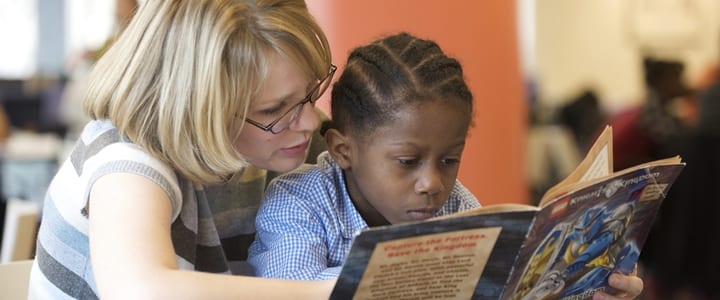Is your child struggling with his or her reading skills? Here are some helpful tips from Brick, NJ tutor Elizabeth C. to incorporate music with reading…
Does your child know all the lyrics and melodies to their favorite songs yet can’t read a simple sentence? Is your child the one dancing in front of the television or computer copying the latest dance moves from a pop video yet can’t read a grade level book? If you answered yes to either of these questions, you have a “struggling reader.” If you answered “yes” to either of these questions, you also have a musical learner.
Musically inclined children have a natural aptitude for rhythm and tone. These children also have strong audio discrimination skills that help them understand and retain what they hear (hence the ability to rock out to their favorite music). These skills, when recognized, can be utilized to foster reading development and written language fluency.
As a reading specialist and a piano teacher, I have encountered numerous students with these characteristics. Unfortunately, reading in our schools is not often presented as a musical skill, but a passive memorization of phonemic sounds and blends made into words that when combined make sentences that tell a story, share ideas, or give information. However, if we break down reading skills to a musical form, there are sounds (phonics), beats to words (syllables), rhythm of sentences (phrasing), and tone (expression/voice).
If you have a musical learner, by all means do everything you can to foster this gift. You have been blessed with a creative mind. Instrumental or vocal lessons are a great way to develop your child’s natural talents and expand their learning in both math and reading.
If your musical child is struggling to read, there are things that you can do to insure that your child’s reading experience is both musical and magical. The following suggestions are used almost daily within my classroom to reach those talented souls that have “rhythm and soul.”
• When learning new words or sounds, have your child “sing” the material using a genre (e.g. opera, country style, hip-hop, rap, etc.). When my students learn their new words and sentences their favorite style is “heavy metal” (head banging and all!).
• When learning new words, have your child tap their foot or snap their fingers for the individual sounds for blending. This provides rhythmic context for word reading.
• Sing your sentences!
• Give your child the lyrics to their favorite songs and have them read and sing along. This creates the visual component of their audio learning and puts two and two together.
• Last but not least, speak with your child’s teacher about your students’ strengths and ask him/her to provide musically based reading activities. You may also inquire if your district has specialized reading programs like Wilson Reading® that utilize rhythmic instruction with kinesthetic and spatial related activities.
The musical learner is a gifted learner. When educators and parents tap into this natural gift the learning can be enhanced and last a lifetime. The struggling reader can become fluent in reading text and reading music. When these skills come together the sky is the limit!
 Elizabeth C. teaches music theory and piano lessons in Brick, NJ. She is a state-certified teacher with extensive experience working with children of all ages, including individuals with special needs. Learn more about Elizabeth here!
Elizabeth C. teaches music theory and piano lessons in Brick, NJ. She is a state-certified teacher with extensive experience working with children of all ages, including individuals with special needs. Learn more about Elizabeth here!
 Photo by US Department of Education
Photo by US Department of Education
Suzy S.

